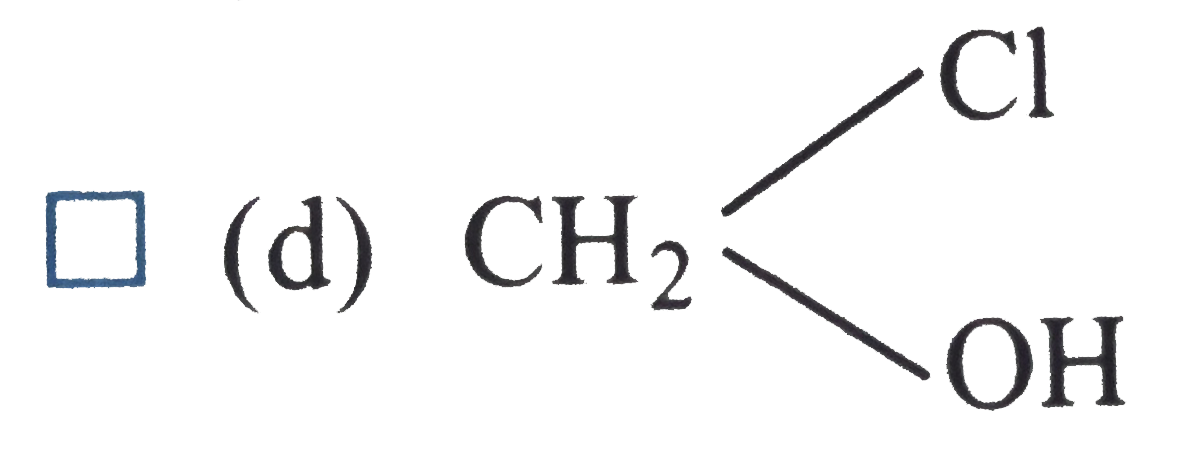A : Cl2 on reaction with NaOH (cold and dilute) gives NaClO3 .
R : Cl2 get oxidized only in this reaction .
If both Assertion & Reason are true and the reason is the correct explanation of the assertion , then mark (1)
If both Assertion & Reason are true but the reason is not the correct explanation of the assertion , then mark (2)
If Assertion is true statement but Reason is false , then mark (3)
If both Assertion and Reason are false statements , then mark (4)
The correct Answer is:D
To solve the question, we need to analyze both the assertion and the reason provided.
Assertion (A): Cl₂ on reaction with NaOH (cold and dilute) gives NaClO₃.
Reason (R): Cl₂ gets oxidized only in this reaction.
1. Understanding the Reaction:
- When chlorine gas (Cl₂) reacts with sodium hydroxide (NaOH) under cold and dilute conditions, it does not produce sodium chlorate (NaClO₃). Instead, it forms sodium chloride (NaCl) and sodium hypochlorite (NaOCl) as products. The balanced chemical equation for this reaction is:
Cl2+2NaOH→NaCl+NaOCl+H2O
2. Analyzing the Assertion:
- Since the assertion states that Cl₂ reacts with NaOH to give NaClO₃, and we have established that the products are NaCl and NaOCl, the assertion is false.
3. Understanding Oxidation States:
- In the reaction, the oxidation state of chlorine in Cl₂ is 0. In NaCl, the oxidation state of Cl is -1, and in NaOCl, the oxidation state of Cl is +1.
- This indicates that chlorine undergoes both oxidation (from 0 to +1 in NaOCl) and reduction (from 0 to -1 in NaCl) in this reaction.
4. Analyzing the Reason:
- The reason states that Cl₂ gets oxidized only in this reaction. However, since Cl₂ is both oxidized and reduced in this reaction, the reason is also false.
5. Conclusion:
- Both the assertion and the reason are false. Therefore, the correct answer is option 4: "Both statements are false."
Reason (R): Cl₂ gets oxidized only in this reaction.
- When chlorine gas (Cl₂) reacts with sodium hydroxide (NaOH) under cold and dilute conditions, it does not produce sodium chlorate (NaClO₃). Instead, it forms sodium chloride (NaCl) and sodium hypochlorite (NaOCl) as products. The balanced chemical equation for this reaction is:
Cl2+2NaOH→NaCl+NaOCl+H2O
- Since the assertion states that Cl₂ reacts with NaOH to give NaClO₃, and we have established that the products are NaCl and NaOCl, the assertion is false.
- In the reaction, the oxidation state of chlorine in Cl₂ is 0. In NaCl, the oxidation state of Cl is -1, and in NaOCl, the oxidation state of Cl is +1.
- This indicates that chlorine undergoes both oxidation (from 0 to +1 in NaOCl) and reduction (from 0 to -1 in NaCl) in this reaction.
- The reason states that Cl₂ gets oxidized only in this reaction. However, since Cl₂ is both oxidized and reduced in this reaction, the reason is also false.
- Both the assertion and the reason are false. Therefore, the correct answer is option 4: "Both statements are false."
Similar Questions
Knowledge Check
Cl2 on reaction with excess of NH3 gives
ANH4Cl+N2BNCl3+HClCNCl3Cl onlyDNH4Cl+NCl3CH2Cl2 on heating with NaOH solution gives :
ACH3OHBHCOONaCHCHOD
Calomel (H2Cl2) on reaction with ammonium hydroxide gives
AHgOBHg2OCNH2−Hg−Hg−ClDHgNH2Cl
Calomel (H2Cl2) on reaction with ammonium hydroxide gives
View SolutionCalomel (Hg2Cl2) on reaction with ammonium hydroxide gives
View SolutionPhCH3 on reaction with Cl2+hv followed by Na/ether will give
View SolutionThe reaction of slaked lime with Cl2 gas gives
View SolutionA : 2F−+Cl2→2Cl−+F2 is a reaction having ΔG0=−ve .
R : Cl2 is better oxidizing agent than F2 .
View Solution
